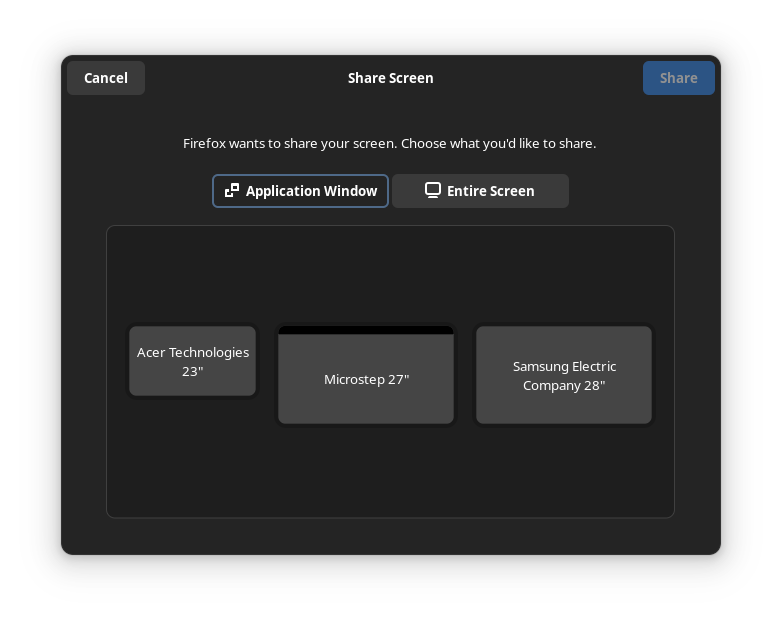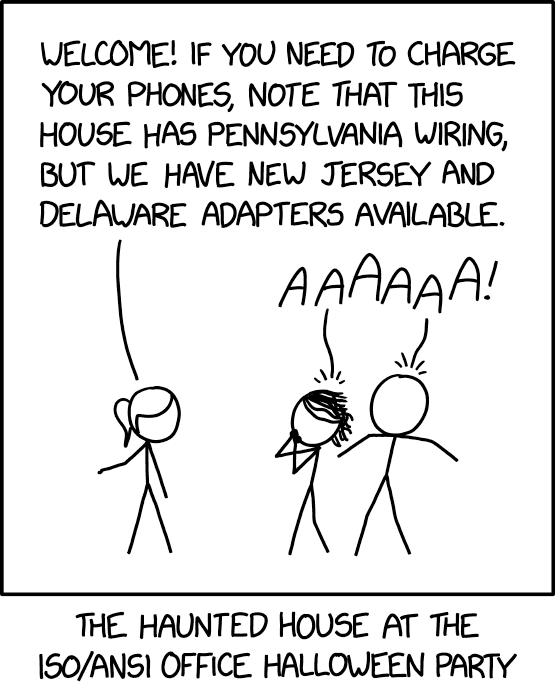Are you doing auth in the reverse proxy for Jellyfin? Do you use Chromecast or any non-web interface? If so I’m very interested how you got it to work.
- 6 Posts
- 549 Comments
The concern is that it would be nice if the UNIX users and LDAP is automatically in sync and managed from a version controlled source. I guess the answer is just build up a static LDAP database from my existing configs. It would be nice to have one authoritative system on the server but I guess as long as they are both built from one source of truth it shouldn’t be an issue.
Yes, LDAP is a general tool. But many applications that I am interested in using it for user information. That is what I want to use it for. I’m not really interested in storing other data.
I think you are sort of missing the goal of the question. I have a bunch of self-hosted services like Jellyfin, qBittorrent, PhotoPrism, Metabase … I want to avoid having to configure users in each one individually. I am considering LDAP because it is supported by many of these services. I’m not concerned about synchronizing UNIX users, I already have that solved. (If I need to move those to LDAP as well that can be considered, but isn’t a goal).
I do use a reverse proxy but for various reasons you can’t just block off some apps. For example if you want to play Jellyfin on a Chromecast or similar, or PhotoPrism if you want to use sharing links. Unfortunately these systems are designed around the built-in auth and you can’t just slap a proxy in front.
I do use nginx with basic with in front of services where I can. I trust nginx much more than 10 different services with varying quality levels. But unfortunately not all services play well.

 1·10 days ago
1·10 days agoEven then how you you know? I don’t think anyone can reliably look at a vegetable and tell you how nutritious it is. I don’t think it is reasonable to have the general population being experts in evaluating vegetables.
I think what could work here is mandated labeling. This is required for most foods but generally not produce. I think there are some reasonable reasons for this, but for farms producing huge volumes it seems that occasional testing that gets reported at the store would make sense.
How are you configuring this? I checked for Jellyfin and their are third-party plugins which don’t look too mature, but none of them seem to work with apps. qBittorrent doesn’t support much (actually I may be able to put reverse-proxy auth in front… I’ll look into that) and Metabase locks SSO behind a premium subscription.
IDK why but it does seem that LDAP is much more widely supported. Or am I missing some method to make it work

 4·11 days ago
4·11 days agoBut it does boil down to business pressures. The business prefers more and bigger produce to more nutritional produce.
Is that a bad thing? Maybe not. Maybe you can just eat more to get your nutrition since higher yield should reduce cost.
But the point still stands that there is very little business pressure to make a nutritious product.
But the problem is that most self-hosted apps don’t integrate well with these. For example qBittorrent, Jellyfin, Metabase and many other common self-hosted apps.
NixOS makes it very easy to declaratively configure servers. For example the users config to manage UNIX users: https://nixos.org/manual/nixos/stable/options#opt-users.users
Yet another service to maintain. If the server is crashing you can’t log in, so you need backup UNIX users anyways.
I mean it is always better to have more open source. But the point of the multi-hop system is that you don’t need to trust the server. Even if the server was open source:
- You wouldn’t know that we are running an unmodified version.
- If you need to trust the server then someone could compel us to tap it or monitor it.
The open source client is enough to verify this and the security of the whole scheme.
I use NixOS.

 19·11 days ago
19·11 days agoHere is the problem with crop quality:
- Most of the purchase decision is what is observable at the store.
- Does it look good.
- What is the price.
- How is the smell, texture, weight…
- Some happens at home, and you might remember for next time.
- How does it taste.
- How long does it last.
- Does it make you feel satisfied.
- It is basically impossible to know how good food was for you.
- You eat a lot of food and the response is delayed.
- Even if you have a response you probably don’t properly understand your body.
- In the end most of the “health” of food is just your believes and marketing.
So there is basically no business pressure to have crops be nutritious.
- Most of the purchase decision is what is observable at the store.

 17·11 days ago
17·11 days agoYeah, I can’t believe how hard targeting other consoles is for basically no reason. I love this Godot page that accurately showcases the difference:
https://docs.godotengine.org/en/stable/tutorials/platform/consoles.html
Currently, the only console Godot officially supports is Steam Deck (through the official Linux export templates).
The reason other consoles are not officially supported are:
- To develop for consoles, one must be licensed as a company. As an open source project, Godot has no legal structure to provide console ports.
- Console SDKs are secret and covered by non-disclosure agreements. Even if we could get access to them, we could not publish the platform-specific code under an open source license.
Who at these console companies think that making it hard to develop software for them is beneficial? It’s not like the SDK APIs are actually technologically interesting in any way (maybe some early consoles were, the last “interesting” hardware is probably the PS2). Even if the APIs were open source (the signatures, not the implementation) every console has DRM to prevent running unsigned games, so it wouldn’t allow people to distribute games outside of the console marker’s control (other than modded systems).
So to develop for the Steam Deck:
- Click export.
- Test a bit.
To develop for Switch (or any other locked-down console):
- Select a third-party who maintains a Godot port.
- Negotiate a contract.
- If this falls through go back to step 1.
- Integrate your code to their port.
- Click export.
- Test a bit.
What it could be (after you register with Nintendo to get access to the SDK download):
- Download the SDK to whatever location Godot expects it.
- Click export.
- Test a bit.
All they need to do is grant an open source license on the API headers. All the rest is done for them and magically they have more games on their platform.
Mullvad is one of the best options if you care about privacy. They take privacy seriously, both on their side and pushing users towards private options. They also support fully anonymous payments. Their price is also incredibly reasonable.
I’m actually working on a VPN product as well. It is a multi-hop system so that we can’t track you. But it isn’t publicly available yet, so in the meantime I happily recommend Mullvad.

 6·19 days ago
6·19 days agoHTTP/1.1 403 UNAUTHORIZED { "error": { "status": "UNAUTHORIZED", "message": "Unauthorized access", }, }I would separate the status from the HTTP status.
- The HTTP status is great for reasonable default behaviours from clients.
- The application status can be used for adding more specific errors. (Is the access token expired, is your account blocked, is your organization blocked)
Even if you don’t need the status now, it is nice to have it if you want to add it in the future.
You can use a string or an integer as the status code, string is probably a bit more convenient for easy readability.
The message should be something that could be sent directly to the user, but mostly helpful to developers.

 1·25 days ago
1·25 days agoYeah. I like old school tabs that were clearly attached to the thing that they switched. I definitely prefer the KDE UX here.

 5·25 days ago
5·25 days agoI don’t think it is that simple. I think that outline is about the “focus”. So if I press enter it will activate that tab, if I press tab it will move the focus to the “Entire Screen” tab.
The UX issue is that there are two concepts of focus in this UI. There is “which tab is active” and “what UI element will pressing enter activate”. These two are not sufficiently differentiated which leads to a confusing experience.
Or maybe there can just be no keyboard focus indicator by default, but that may be annoying for keyboard power users. But this is generally how it works on the web, you have to press tab once to move keyboard focus to the first interactive element.

 16·25 days ago
16·25 days agoThe one that always gets me is GNOME’s screen sharing portal.

There is this outline around the “Application Window” tab which makes it seem selected. I use this UI multiple times a week and I need to pause for a sec every single time. I always think “I want to share a window”, “oh it is already selected” then stare at the monitors for a while before I realize why I can’t understand what I am looking at.







Ah ok. You aren’t doing auth. I don’t understand how this is relevant.